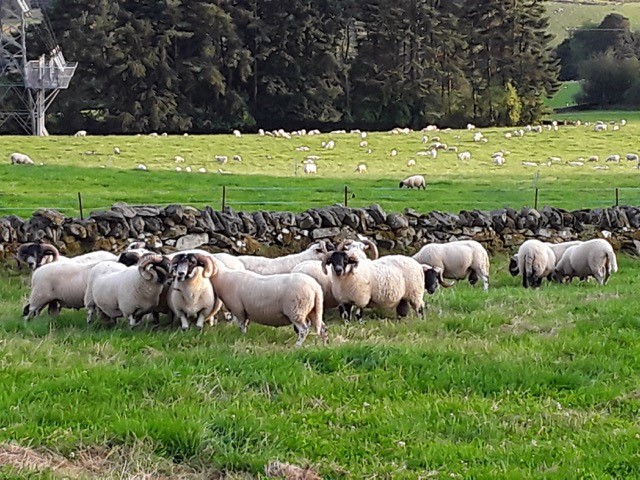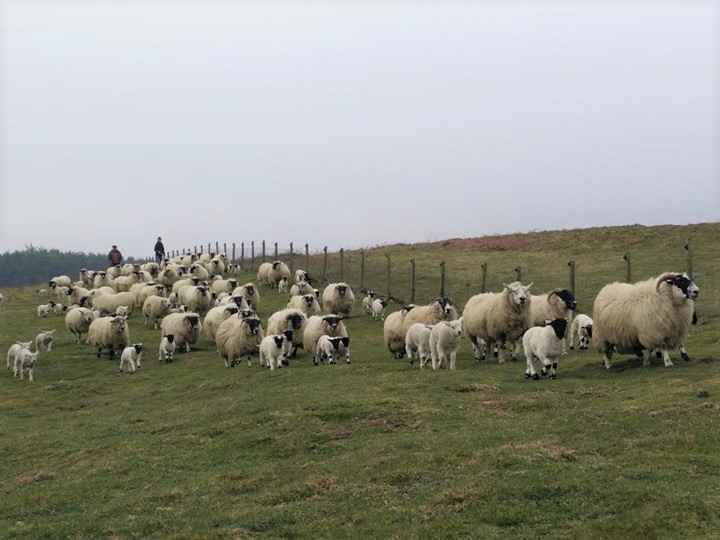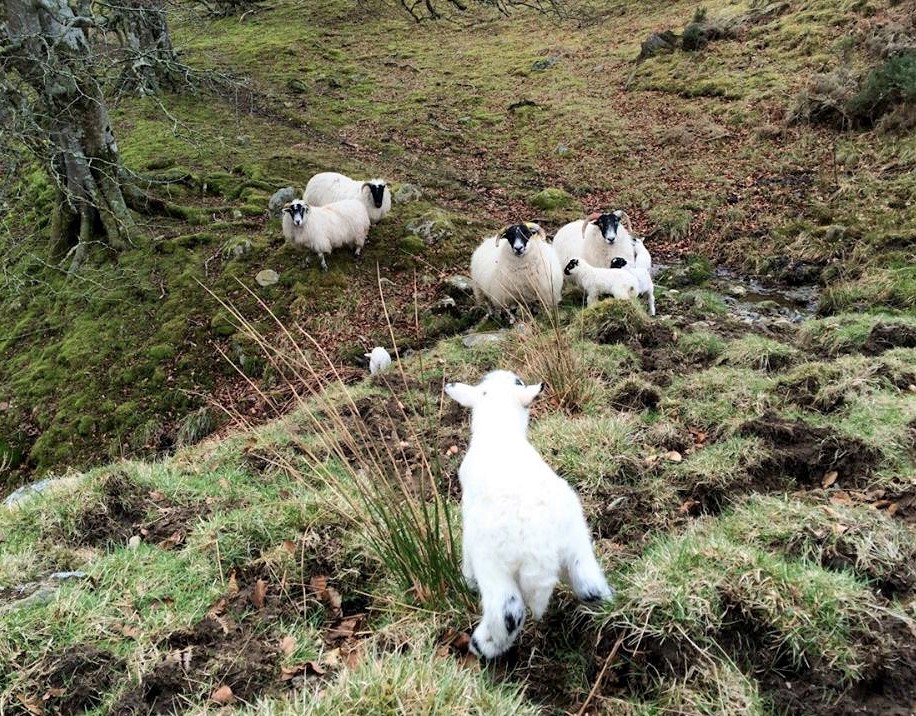Blackface sheep
Six members of the Maternal Sheep Group are focussing on Blackface sheep and our ewes represent over 80% of the performance recorded ewes.
The group’s aim is to breed an efficient ewe that will lamb outdoors and be capable of rearing lambs while utilising grazing of variable quality. Similar to the Easy Care breeders, they also select for ease of lambing, twinning rate, lively lambs that are quick to suckle, good maternal instinct and healthy feet. The rams have been selected for fertility and work rate and can be run with a high number of ewes.
Bobby Lennox,
Shantron Farm, Luss, West Dunbartonshire
Bobby runs around 1,100 Blackface ewes on a wet hill farm that runs from 25 feet to 2,250 feet above sea level. He has been performance recording for over 30 years but selecting for easier management traits for over 40 years. He initially focused on improving carcase weight, then carcase shape and is now selecting for maternal traits while ensuring muscle depth and growth rates are maintained or improved.
Rams are available to purchase off farm and will tend to be in the top 5% of the breed.
They also run 20 suckler cows.
Click to see Lennox of Lomond Facebook page
Bobby and his family are one of the new Scottish Enterprise’s Agri-tourism monitor farm – visit Shemore on Loch Lomond Facebook page.
Jo Conington,
SRUC’s Castlelaw, Penicuik, Midlothian
SRUC’s experimental farm in the Pentlands has 700 Blackface ewes, which have been performance recorded for over 20 years. A recent focus for the flock is resilience to internal parasites. Currently no breeding stock is available for sale.
Eileen McCloskey
College of Agriculture, Food and Rural Enterprise (CAFRE), Greenmount College, County Antrim
A flock of 1,150 performance recorded Blackface ewes are run at the government owned Glenwherry Hill Farm. The farm runs between 600 ft and 1400 ft, and the land types vary from in-bye to unimproved grassland to heather moorland. Currently no breeding stock is available for sale.
Peter and Bob Myles,
Dalbog Farm, Edzell, Angus
Peter and his brother Bob farm 1,800 acres in Glen Esk, their land that runs from 300 ft to 2,000 ft with around 30 inches of rainfall per year. Over 50% of the land is heather hill. In the in-bye area, they drill around 25 acres of reseeds each year and around 70 acres of cereals to feed to their cattle.
They run 550 Blackface ewes with a proportion of purebred recorded ewes. All the ewes are lambed outdoors. Peter is focussing on improving maternal traits and is aiming to reduce lambing assistance. He sells rams each year and is also willing to sell females.
They also farm 100 suckler cows and take the cattle through to finish and buy in approximately 30 stores per year.
Peter is very heavily involved in the Ghent lambing project and welcomes Belgian vet students every year.
Ann McLaren,
SRUC’s Hill and Mountain Research Centre, Crianlarich, Perthshire
Kirkton and Auchtertyre Farms are part of SRUC’s Hill and Mountain Research Centre. There are run as one unit as a mixed hill beef and sheep farm with 2,225 ha of mainly hill land that runs to 3,300 ft and receives 100 inches of rainfall each year.
Overall, the farms run 1,300 breeding ewes, 600 of which are based Kirkton (400 Scottish Blackface and 200 Lleyn ewes). The Blackface ewes have been performance recorded with Signet for over 20 years and the Lleyns since 2011.
The flock is associated with various SRUC research projects, including those assessing different management systems, investigating potential new traits for future genetic selection and the use of technology.
Breeding stock are selected each year according to their index value.
Some rams and young females, of both breeds, are available each year. Enquiries welcome.






